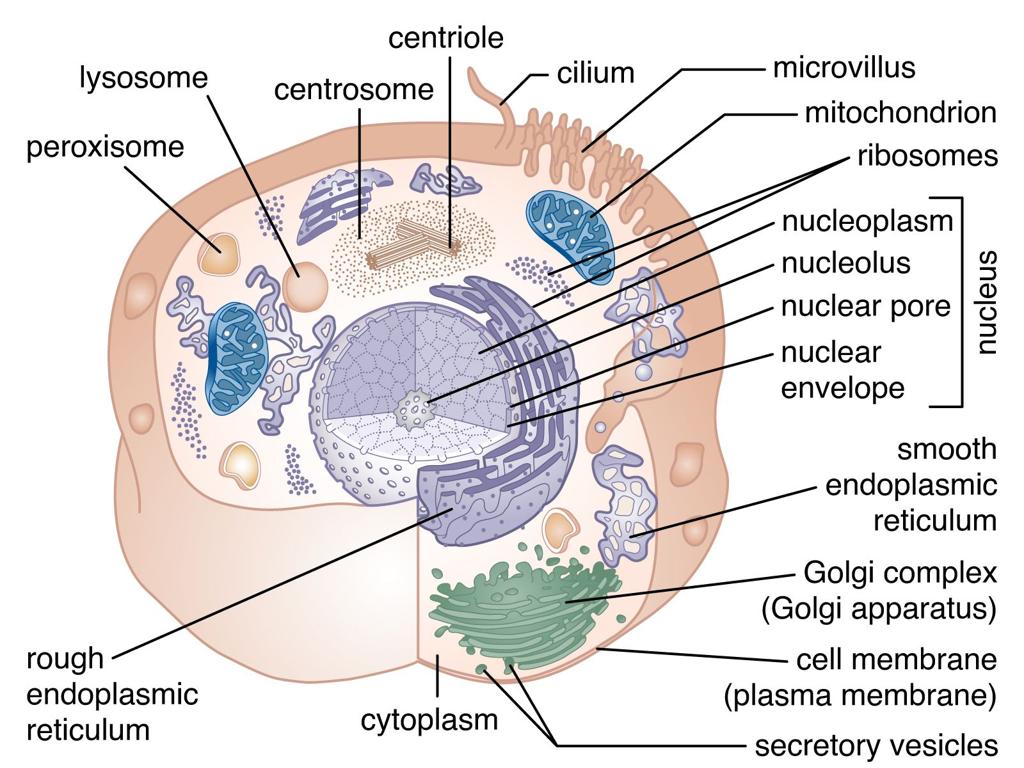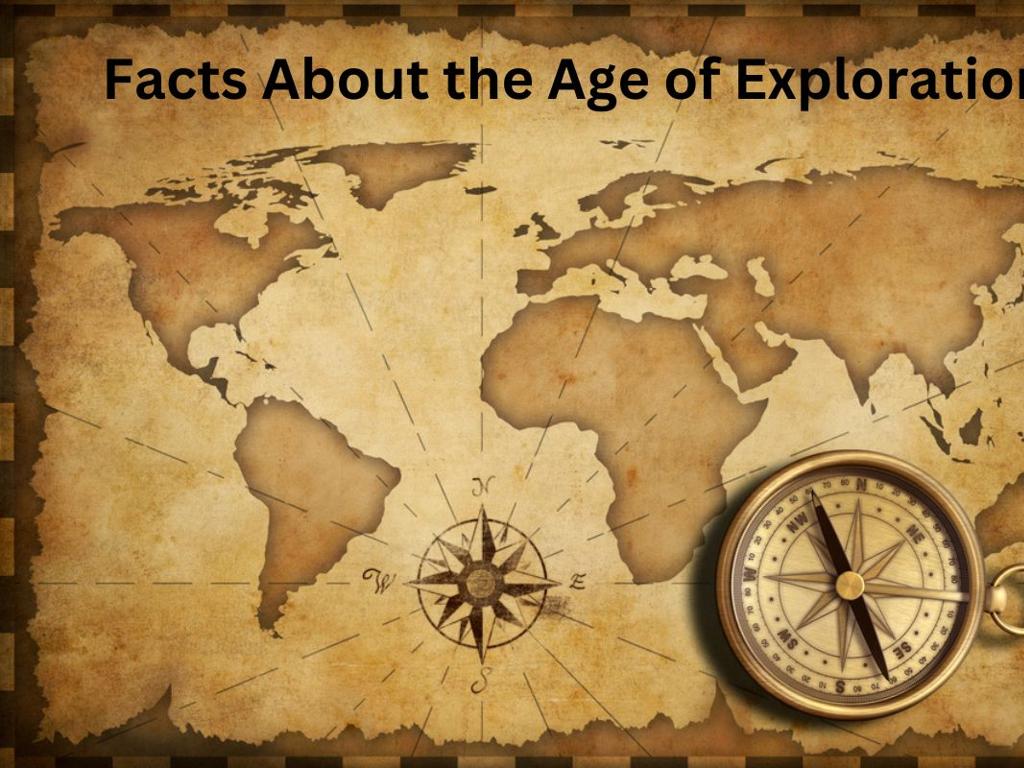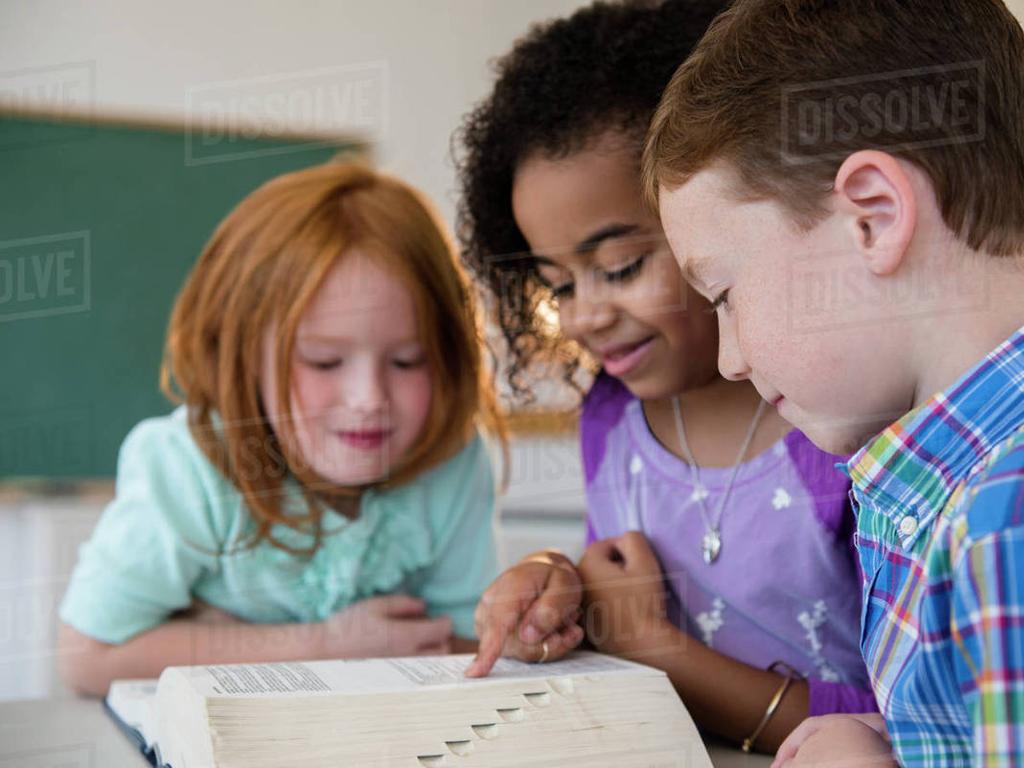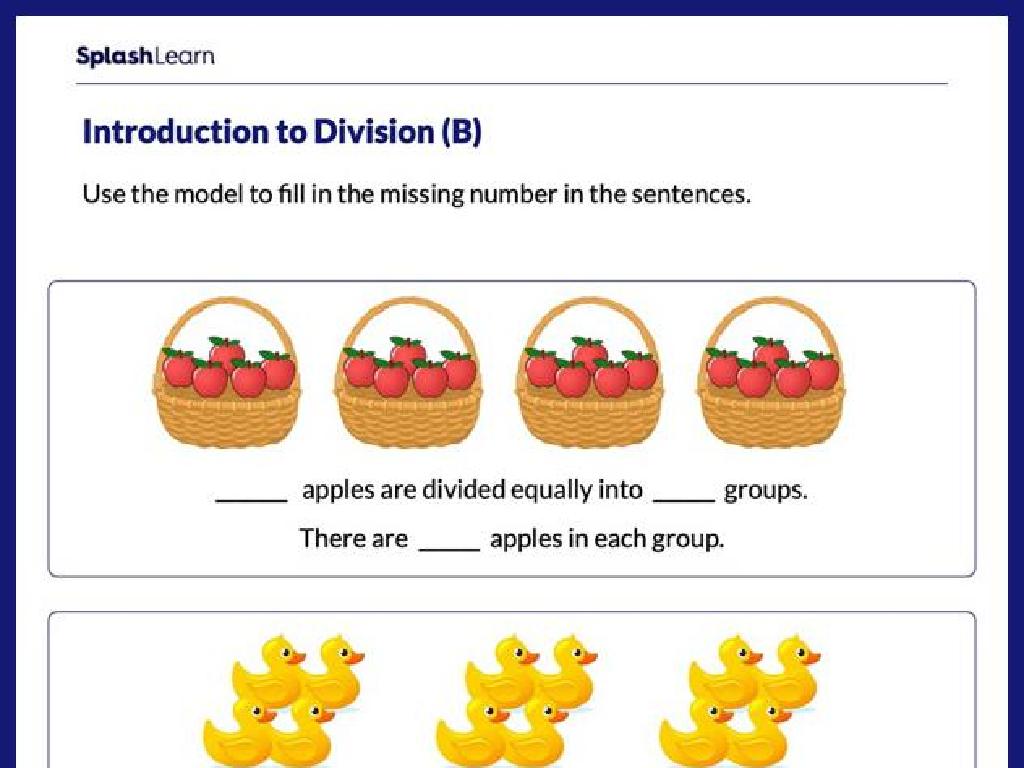Area And Circumference Of Circles
Subject: Math
Grade: Eighth grade
Topic: Perimeter And Area
Please LOG IN to download the presentation. Access is available to registered users only.
View More Content
Exploring Circles: Area and Circumference
– What is a circle?
– Calculating circle area
– Area = Àr², where r is the radius
– Finding circle circumference
– Circumference = 2Àr, where r is the radius
– Circles in real life
– Used in design, construction, and more
|
This slide introduces students to the fundamental concepts of geometry related to circles. Begin by discussing the definition of a circle and its properties. Move on to the mathematical formulas for calculating the area (Àr²) and circumference (2Àr) of a circle, ensuring to explain the significance of À (pi) and how it relates to the circle’s radius. Emphasize the practical applications of these calculations in various real-life scenarios such as architecture, engineering, and everyday objects like plates and wheels. Encourage students to think of examples where they encounter circles in their daily lives. The goal is to help students understand the relevance of these mathematical concepts beyond the classroom.
Exploring Circles: Area and Circumference
– Definition of a circle
– A round plane figure with all points equidistant from the center
– Circle’s key components
– Center: circle’s middle point, Radius: line from center to edge, Diameter: line across circle through center, Circumference: distance around circle
– Radius and diameter relationship
– Diameter is twice the length of the radius (D = 2r)
– Circumference of a circle
– Circumference is the perimeter of the circle (C = Àd or C = 2Àr)
|
Begin with a clear definition of a circle to set a foundation for understanding. Highlight the key components such as the center, radius, diameter, and circumference, which are crucial for calculating area and circumference. Explain the relationship between the radius and diameter, emphasizing that the diameter is always twice the length of the radius. This is important for understanding formulas related to circles. Conclude with the circumference, which is the total distance around the circle, and present the formulas involving pi (À). Use examples to illustrate these concepts, such as comparing the diameter to the length of a string wrapped around a circular object to find the circumference.
Circumference of a Circle
– Circumference: Circle’s perimeter
– Circumference formula: C = 2Àr
– Where r is the radius of the circle
– Alternative formula: C = Àd
– d represents the diameter of the circle
– Class activity: Calculate together!
– Use different circle examples to practice
|
The circumference is the distance around the circle, similar to the perimeter of a polygon. Introduce the formula C = 2Àr, where ‘r’ is the radius, and explain that À (pi) is a constant approximately equal to 3.14. Also, present the alternative formula C = Àd, where ‘d’ is the diameter of the circle, which is twice the radius. During the class activity, provide students with various circles and ask them to calculate the circumference using both formulas. This will help them understand the relationship between diameter, radius, and circumference. Encourage students to measure and calculate the circumference of real objects like plates or wheels to apply their knowledge practically.
Exploring Pi (À)
– Understanding Pi (À)
– Pi (À) is the ratio of a circle’s circumference to its diameter.
– Pi (À): A constant value
– À is approximately 3.14159, crucial in circle calculations.
– Real-world examples of À
– Circumference of wheels, pie sizes, and circular tracks.
– Significance of À in formulas
– À is used in formulas for area and circumference of circles.
|
This slide introduces students to the mathematical constant Pi (À), which is fundamental in understanding the properties of circles. Pi represents the ratio of the circumference of any circle to its diameter and is approximately 3.14159. Emphasize its significance in various formulas related to circles, such as the area (A=Àr²) and circumference (C=2Àr). Provide relatable examples, such as measuring wheels, determining the size of a pie, or calculating the distance around a circular track, to illustrate the use of À in real-world contexts. Encourage students to remember that À is a constant value that they will use frequently in mathematics, especially in geometry.
Calculating the Area of a Circle
– Area: space inside the circle
– Formula for area: A = Àr²
– A represents the area, À (pi) is approx. 3.14, and r is the radius of the circle.
– Practice problem with radius
– Calculate area with a given radius, e.g., if r = 3 cm, area = À * 3² cm².
– Understanding À in the formula
– À is a constant representing the ratio of circumference to diameter of any circle.
|
This slide introduces the concept of the area of a circle to eighth-grade students. Begin by explaining that the area is the amount of space contained within the circle’s boundaries. Emphasize the importance of À (pi), an irrational number approximately equal to 3.14, which is crucial in the formula for calculating the area. Provide a practice problem where students apply the formula A = Àr² using a given radius to find the area. For example, if the radius is 3 cm, the area would be À * 3² or approximately 28.26 cm². Explain that À is the same for all circles and it represents the ratio of a circle’s circumference to its diameter, which is approximately 3.14159. Encourage students to memorize the formula and understand its components for future problem-solving.
Real-Life Applications: Area & Circumference
– Everyday uses of circle measurements
– Area for floor tiling, circumference for wheel rotations
– Calculating area & circumference
– Use formulas: Area = Àr^2, Circumference = 2Àr
– Group Activity: Classroom object measurement
– Measure objects like clocks, plates, or jars
– Discussing findings & applications
|
This slide aims to connect the mathematical concepts of area and circumference of circles with real-world applications. Students will see how these measurements are used in daily life, such as in home decoration or automotive design. The group activity involves hands-on learning where students will measure circular objects around the classroom and calculate their area and circumference using the appropriate formulas. This will help solidify their understanding of the mathematical principles and their practical utility. After the activity, encourage students to discuss how these measurements apply to the objects they’ve measured and explore other potential applications in various fields.
Class Activity: Let’s Measure Circles!
– Find circular objects to measure
– Calculate each object’s circumference
– Use formula C = 2Àr, where r is the radius
– Calculate each object’s area
– Use formula A = Àr^2, where r is the radius
– Share your measurements with the class
|
This interactive class activity is designed to help students apply their knowledge of the formulas for circumference and area of circles to real-world objects. Provide students with tools like string, rulers, and calculators. They should find objects, measure the radius, and then calculate the circumference and area. Encourage precision in measurement and calculation. Possible objects include lids, jars, or wheels. After calculations, students will present their findings, fostering a collaborative learning environment. This activity reinforces the practical application of mathematical concepts and enhances students’ understanding of geometry in everyday life.
Review and Reflection: Circles
– Recap: Circumference formula
C = 2Àr or C = Àd, where r is radius and d is diameter.
– Recap: Area of a circle formula
A = Àr^2, where r is the radius of the circle.
– Reflect: What have we learned?
Discuss key takeaways and insights from today’s lesson.
– Q&A: Address curiosities
|
This slide aims to consolidate the students’ understanding of the circumference and area of circles. Begin by reviewing the formulas for circumference (C = 2Àr or C = Àd) and area (A = Àr^2), ensuring students can identify the radius and diameter in a circle. Encourage students to reflect on the day’s lesson by discussing what they’ve learned and how they can apply it to real-world scenarios. Finally, open the floor for any questions or further curiosities the students might have, allowing them to clarify their understanding or delve deeper into the topic. This interactive conclusion to the lesson helps reinforce their knowledge and promotes curiosity.
Homework Challenge: Mastering Circles
– Complete the worksheet provided
– Study for the upcoming quiz
– Focus on formulas for perimeter and area of circles
– Compile questions for next class
– Practice calculating area and circumference
– Use examples like finding the area of a circular garden or the circumference of a bicycle wheel
|
This homework is designed to reinforce the concepts of area and circumference of circles. The worksheet will provide a variety of problems to ensure students practice and understand the calculations involved. Encourage students to review their notes and textbook examples to prepare for the quiz. Remind them that understanding these concepts is not only crucial for the quiz but also for real-life applications. In the next class, we will address any questions and clarify doubts, ensuring all students are confident in their ability to solve problems related to the perimeter and area of circles.






